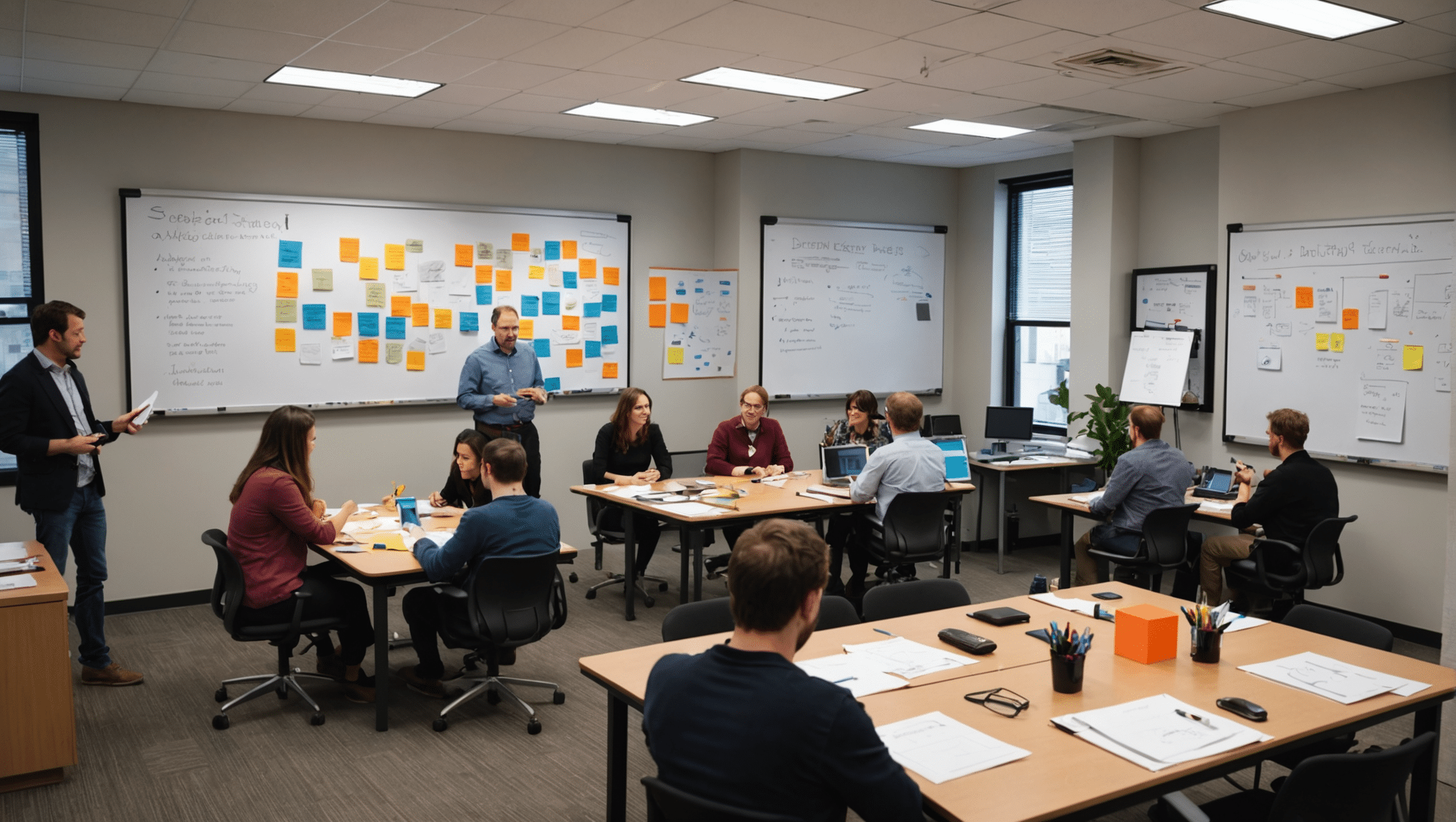Design thinking positions itself as an essential catalyst in the creation of disruptive innovations. By adopting a collaborative and user-centered approach, this methodology transforms abstract ideas into concrete solutions that redefine markets. By bringing various stakeholders together at the table, design thinking fosters a co-construction of creativity, pushing the boundaries of established conventions. Thanks to this dynamic, it becomes possible to challenge habits and initiate radical changes, thereby providing fertile ground for the emergence of innovative ideas.
🔥 Nous recommandons Ideamap
Ideamap est l’outil idéal pour un brainstorming ou un projet collaboratif. Grâce son interface facile et à ses fonctions IA, Ideamap booste votre créativité tout en favorisant une meilleure organisation de vos idées pour atteindre vos objectifs.
|
IN SHORT
|
Design thinking is a method that transcends traditional creation processes. It is a user-centered approach that promotes collaboration, empathy, and creativity. By utilizing this methodology, companies can develop disruptive innovations, meaning radical changes that redefine markets and enhance user experience. This article explores the essential role of design thinking in generating innovative ideas and how it contributes to transforming abstract concepts into tangible and commercial solutions.
Understanding Design Thinking
Design thinking is much more than just a simple design technique; it is a corporate culture that emphasizes the importance of user experience. By gathering various stakeholders at the table, it allows for co-creating and defining solutions that truly meet users’ real needs. This methodology takes place over several stages: problem definition, user profiling, ideation, prototyping, and testing. These steps establish a collaborative framework that not only stimulates team engagement but also encourages disruptive innovation.
The Importance of Collaboration
The power of design thinking lies in the collaboration between different disciplines and viewpoints. By bringing together experts from varied backgrounds, teams are able to produce richer and more diverse ideas. This broadens the scope of possibilities while minimizing decision biases. This common language, based on empathy and understanding, also facilitates the co-construction of projects that genuinely meet market expectations.
Stimulating Creativity for Disruptive Innovations
Design thinking is intrinsically linked to the idea of disruption. It encourages thinking outside the box and considering solutions that are not merely improvements of existing offerings but that can completely reconfigure a sector. By exploring a maximum number of ideas during the ideation phase, it becomes possible to surpass established practices and envision new products or services that can create new markets.
Validations and Tests: Concrete Innovations
The validity of the concepts generated through design thinking is often tested through prototypes. These models, whether tangible or digital, bring ideas to life and allow for experimentation with their market fit. The method promotes an iterative cycle where user feedback guides adjustments, thus making the innovation process more effective. This practical aspect of design thinking ensures that disruptive innovations do not remain confined to theory but find their place in the real market.
The Challenges of Design Thinking
Despite its promises, the implementation of design thinking can encounter various challenges. One of the main difficulties lies in the resistance to change within organizations. They must overcome rigid processes to adopt this more flexible and collaborative work philosophy. To avoid pitfalls, it is essential to properly train teams and to integrate the spirit of design thinking right from the start of projects. To learn more about the pitfalls to avoid in this implementation, refer to this article here.
Measuring the Impact of Design Thinking on Innovation
A crucial aspect for businesses is measuring the impact of design thinking on their innovation capacity. By using clear indicators, organizations can assess the effectiveness of this approach on their projects. This not only helps justify the efforts invested in design thinking but also allows for adjusting methodologies to maximize results. For a detailed approach on measuring this impact, refer to this article available here.
Design thinking positions itself as an essential catalyst for disruptive innovations. Through its dynamic methodology and emphasis on collaboration, it enables companies to navigate toward innovative solutions that not only meet user needs but also redefine the competitive landscape. With a strong commitment to experimentation, ideas emerge, transform, and become genuine business advantages.

The design thinking serves as an essential engine in the innovation process, particularly for creating disruptive innovations. By emphasizing empathy and a deep understanding of users’ needs, this approach triggers innovative ideas that challenge traditional formats. By focusing on user experience, design thinking facilitates the identification of real problems, thereby paving the way for unexpected and disruptive solutions.
The collaborative dynamic at the heart of design thinking also stimulates creativity within teams. By bringing together actors with varied skills, this methodology encourages true co-construction of ideas. This diversity of perspectives not only enriches the creative process but also broadens the anticipation of impacts and outcomes, leading to the design of truly innovative solutions.
Furthermore, design thinking is not just a method; it is a mindset that invites exploration of the unknown. By adopting an experimental mentality, teams can quickly test hypotheses through prototypes, thus fostering an atmosphere where failure is seen as a learning opportunity. This iterative approach contributes to continuously adjusting ideas and optimizing solutions, increasing the probability of success during their market launch.
Ultimately, design thinking proves to be an indispensable strategy for generating disruptive innovations. It unites the strengths of a diverse team around a common vision while directing efforts toward the emergence of truly disruptive solutions that address contemporary challenges. This capacity to combine innovation and collaboration makes it a valuable tool in the ever-evolving landscape of product development.














